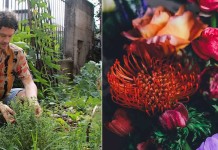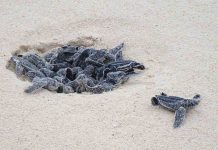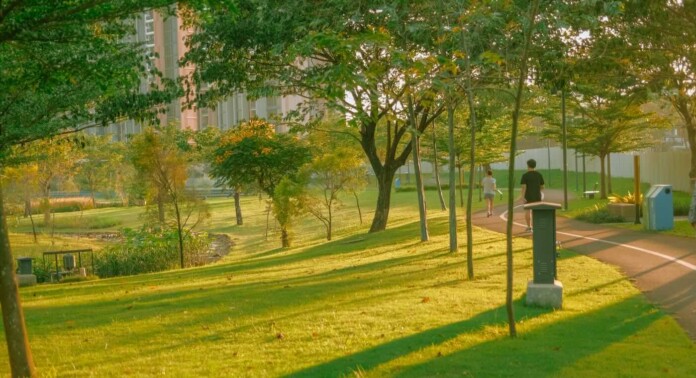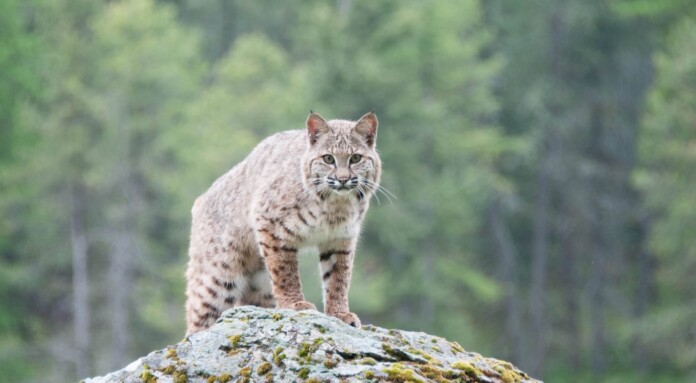On this day 35 years ago, the famed Hubble Space Telescope was launched into low Earth orbit by the Space Shuttle Discovery. Built by NASA with help from the European Space Agency, Hubble is still in operation today, as one of the largest and most versatile of its kind. WATCH a 30th anniversary video… (1990)
New Kind of Antibiotic Is First in 30 Years to Treat UTIs That Keep Coming Back

For the millions of American women and girls who will get a UTI at some point in the next few years, they may be able to treat it with the first new medication approved for the purpose in 3 decades.
The new class of targeted, oral antibiotic for urinary tract infections is designed to bypass developing antibiotic resistance in UTIs and eliminate recurrence of UTIs in women who experience them frequently.
According to CNN, the drug, gepotidacin, will be sold under the brand name Blujepa and is expected to be available in the second half of 2025.
Blujepa is the first new oral antibiotic to treat UTIs to gain approval in more than 20 years, but it’s been almost 30 since the critical bacteria-fighting function of such a treatment has been redesigned.
“We are proud to have developed Blujepa, the first in a new class of oral antibiotics for [uncomplicated UTIs] in nearly three decades, and to bring another option to patients given recurrent infections and rising rates of resistance to existing treatments,” read a statement from GSK, which developed the drug.
Gepotidacin works by targeting two enzymes that bacteria need to copy themselves.
Women contract these infections at a much higher rate than men. About half of all women will experience a UTI at some point in their lives. One third of these women will have a UTI that returns multiple times.
UTIs are the cause of roughly 8 million emergency room visits and 100,000 hospitalizations in the US each year, GSK said.
It was funded in part by grants from the US government’s Biomedical Advanced Research and Development Authority.
GETTING ONE OVER ON RESISTANT BACTERIA: Oysters Carry Protein That Kills Bacteria Behind Pneumonia, Strep Throat, and Scarlet Fever: Study
3,000 women and girls took part in the clinical trials which led to the drug’s approval, with the results demonstrating increased efficacy compared to nitrofurantoin, the most commonly-prescribed antibiotic for UTIs.
Side effects including diarrhea and nausea were reported in 16% and 9% of the females respectively, much of which was described as “mild.”
HOMEOPATHIC DISEASE PREVENTION: Antiviral Chewing Gum Can Reduce Influenza and Herpes Simplex Transmission
While many Americans prefer to treat such infections homeopathically, there are times when infections are more aggressive, or when homeopathic options are not available—for example, if one is traveling. In these cases, a more effective backup is a welcomed option.
SHARE This Positive Drug Development Story With Your Friends…
Man Revives Iconic Indian Lake by Converting Lake Weed Infestation into Organic Fertilizer Business

From Northern India comes the story of an entrepreneur’s efforts to clean up a historically-beautiful lakefront by turning an infestation of weeds into rich natural fertilizer.
Being something along the lines of the Lake Como of India, Dal Lake in the nation’s northerly city of Srinagar is surrounded by palaces, temples, fog-cloaked forested hills, and is iconic in the country for its houseboat culture.

Yet for all its natural and historic beauty, Dal Lake was sick—sick with lake weeds.
“These aquatic plants had accumulated near Dal Lake over the years, creating an unsightly mess and posing a threat to the local ecosystem,” Maninder Singh tells The Better India.
Singh is the founder of Clean ‘Effen’ Tech (CET), a local-government partner company that harvests thousands of tons of those lake weeds every year, dries and enriches them, then grinds them into fertilizer to sell to local farmers.
Maninder was first inspired to find a solution for clearing the lake weed when visiting Indian-administered Kashmir for his first wedding anniversary. Having already launched an IT startup in his native Uttar Pradesh, Singh would eventually change his focus to creating a social enterprise to tackle the challenges of our age.
The sight of the lake weed marring Dal Lake’s beauty immediately came into his head, and he began an 8-year process to construct a value chain that would see the lake, the local ecology, the global ecology, the local economy, and his own economy, all flourish together.
“Our project is designed to process up to 70,000 [metric] tonnes of lake weed each year, which yields between 20,000 to 22,000 tonnes of organic manure. This large-scale effort is expected to lead to an annual reduction of around 50,000 tonnes of CO2 emissions,” Singh tells The Better India.
“We have made an impact by enriching over 4,400 acres of land, improving soil health, and supporting sustainable agriculture practices.”
Local workers harvest the lake weed using large machines and transport it to CET’s production plant. There the lake water is drained and treated for heavy metals and other pollutants before it’s released.
YOU’LL ALSO LIKE: Young Craftsman Resurrects ‘Extinct’ Musical Instrument by Consulting Ancient Literature (LISTEN)
The lake weed is dried, shredded, enriched, and pulverized before being sold for 25% less than chemical fertilizers imported from other states like UP and Haryana, saving more emissions from transportation.
Local farmers have benefited from the cost savings and from the lack of soil amending. Harvests are up, as are soil nutrient concentrations. Also in an economic sense, the local tourism industry will no doubt benefit from the 14,800 metric tons of lake weed pulled in by Singh’s partners last year, not least because during the hotter summer months the mounds of weeds decay and putrefy the air.
MORE GREAT INDIAN ADVANCEMENTS: City in India Ranks the Cleanest 8 Years in a Row: ‘It Feels as Though You Aren’t in India’
Looking to the future, Singh aims to replicate this success in other Indian lakes—starting in the states of Odisha and Rajasthan. Anywhere there’s a beautiful fresh water body overrun with aquatic plants, Singh hopes to see some Clean ‘Effen’ Tech brought in to clean it the eff up.
SHARE This Great Social Enterprise With Your Friends On Social Media…
Scientists Define a Color Never Before Seen by Human Eyes, Called ‘Olo’–a Blue-Green of Intense Saturation

An experiment in human photoreceptors allowed scientists to recently define a new color, imperceptible by the human eye, that lies along the blue-green spectrum but is different from the two.
The team, who experimented on themselves and others, hope their findings could one day help improve tools for studying color blindness or lead to new technologies for creating colors in digital imagery.
“Theoretically, novel colors are possible through bypassing the constraints set by the cone spectral sensitivities…” the authors write in their abstract. “In practice, we confirm a partial expansion of colorspace toward that theoretical ideal.”
The team from University of California, Berkeley and the University of Washington used pioneering laser technology which they called “Oz” to “directly control the human eye’s photoreceptor activity via cell-by-cell light delivery.”
Color is generated in our vision through the transmission of light in cells called photoreceptors. Eye tissue contain a series of cones for this task, and the cones are labeled as L, S, or M cones.
In normal color vision, the authors explain, any light that stimulates an M cone cell must also stimulate its neighboring L and/or S cones because the M cone spectral response function lies between that of the L and S cones.
“However, Oz stimulation can by definition target light to only M cones and not L or S, which in principle would send a color signal to the brain that never occurs in natural vision,” they add.
Described as a kind of blue-green with “unprecedented saturation” the new color, which the researchers named “olo” was confirmed as being beyond the normal blue-green spectrum by each participant who saw it, as they needed to add substantial amounts of white for olo to fit somewhere within that spectrum.
“The Oz system represents a new experimental platform in vision science, aiming to control photo receptor activation with great precision,” the study says.
Although the authors are confidant that olo has never been seen before by humans, the spectrum of blue-green has received international attention before as a field of vision discovery.
OTHER FASCINATING STUDIES: Why Cats Love to Sit in Boxes – Even Fake Ones, According to Science
A groundbreaking study of the Himba people in Namibia conducted in 2005 and published in journal of the American Psychological Association demonstrated that these traditional landowners seemed to perceive various colors as the same because they used the same word for them. A grouping of colors we in the West would separate into pink, red, and orange, is all serandu to them.
That was only half of the cause for fascination with the study. The other half came from the Himba people’s unbelievable sensitivity to the blue-green spectrum, such that they could reliably pick out the fainest differences in green that Western viewers by comparison missed.
PLAYING MIND GAMES: Scientists Find Surge of Specific Brain Activity in Dying Patients that Could Help Explain Near-Death Experiences
This also corresponded with more words for shades of green which Westerners would never bother specifying, and in fact, the Himba had a harder time pointing out that a blue square was different from green squares when shown a chart, but could reliably select the square of a slightly different shade of green to the rest.
But then it got even stranger. Further studies in the following years included genetic testing on the Himba, and it showed they possess an increased number of cone cells in their eyes. This higher density of cones enables them to perceive more shades and nuances of color than the average person, according to the lead author of the genetic research.
SHARE This Fascinating Conjunction Of Ophthalmology And Anthropology…
Pope Francis’ Dying Wish: To Be Buried in Simple Coffin in His Favorite Basilica Marked Only by His Name

Passing away Monday at the age of 88 to the shock of Easter revelers, Pope Francis left behind a simple last will in testament that outlined how the pontiff hoped his earthly remains would be interred.
The news of the Pope’s death broke first around Europe given the time difference with the US. It happened while citizens in many countries were preparing the spreads for the Easter Monday BBQ that’s become tradition around the continent.
Francis hoped, in a will dating to June of 2022, that he would be interred in the Papal Basilica of Santa Maria Maggiore, rather than in the Papal Tombs, the interior of Saint Peter’s, or Vatican City in general.
Instead, the fifth-century church Francis selected is located in Rome, and is one of four Papal Basilicas of the city. It is dedicated to the Virgin Mary, and a place where the Pope often came for quiet prayer upon his return to Rome from any of the more than 100 trips he made beyond the Eternal City’s confines.
The Pope wrote:
I have always entrusted my life and my priestly and episcopal ministry to the Mother of Our Lord, Mary Most Holy. Therefore, I ask that my mortal remains rest awaiting the day of resurrection in the Papal Basilica of Santa Maria Maggiore.
I wish that my last earthly journey conclude precisely in this ancient Marian sanctuary where I went for prayer at the beginning and end of each Apostolic Journey to confidently entrust my intentions to the Immaculate Mother and thank Her for her docile and maternal care.
I ask that my tomb be prepared in the niche of the side nave between the Pauline Chapel (Chapel of the Salus Populi Romani) and the Sforza Chapel of the aforementioned Papal Basilica.
The tomb must be in the earth; simple, without particular decoration and with the only inscription: Franciscus.
The suffering that has become present in the last part of my life I have offered to the Lord for peace in the world and brotherhood among peoples.
Having grown up in poverty in South America, is there much of a surprise then that Francis desired as simple a burial as the leader of the Catholic Church could possibly be expected to afford himself?
For those to whom Francis was a positive force in the world, and a beloved and inspirational figure, the last will presents as a final parting gift of his benevolence and unique papal character—to be celebrated for having witnessed, and to be remembered warmly.
SHARE The Last Will Of Franciscus With Your Friends On Social Media…
“Progress lies not in enhancing what is, but in advancing toward what will be.” – Khalil Gibran
Quote of the Day: “Progress lies not in enhancing what is, but in advancing toward what will be.” – Khalil Gibran
Photo by: Alim
With a new inspirational quote every day, atop the perfect photo—collected and archived on our Quote of the Day page—why not bookmark GNN.org for a daily uplift?
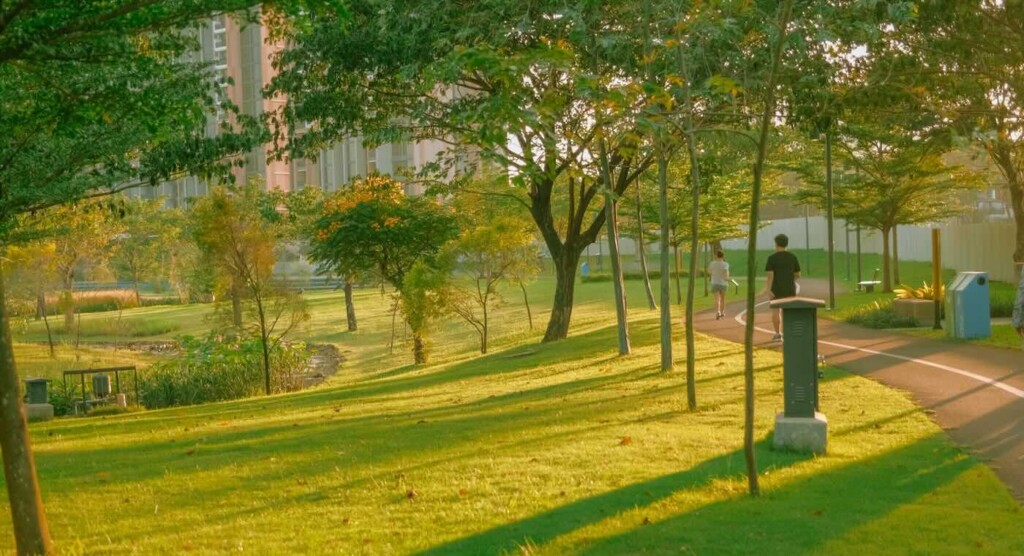
Good News in History, April 23
111 years ago today, the first-ever baseball game was played at Wrigley Field in Chicago. Then known as Weeghman Park, its original occupants were the Chicago Whales, then known as the “Chi-Feds.” Wrigley Field is known for its ivy-covered brick outfield wall, the unusual wind patterns off Lake Michigan, the iconic red marquee over the main entrance, the hand-turned scoreboard, its location in a primarily residential neighborhood with no parking lots and views from the rooftops behind the outfield, and for being the last Major League park to have lights installed for night games. READ a bit more… (1914)
Eddie Vedder’s Quest to Help Cure a Rare Disease Subject of New Documentary
(Image from YouTube courtesy of EBRP)
Famous Pearl Jam frontman Eddie Vedder has decided to lend his star power to efforts to cure a rare skin disease.
Inspired to take action after a family friend’s child was born with the malady, Vedder’s work leveraging the fame and draw of his shows for curing epidermolysis bullosa (EB) has been turned into a “powerful” upcoming documentary set to debut at Tribeca Film Festival in June.
Called Matter of Time, a string of 2023 benefit gigs in Seattle are the backdrop to the film which focuses on EB Research Partnership (EBRP) and its work in finding a cure for this disease that affects just 10 children out of 1 million.
Children with EB are often called “butterfly children” or are said to have the “butterfly skin disease,” referring to the delicateness of their skin membrane. Living with EB leads to large skin blistering, erosions, and ulceration, leading to increased risk of infection, rampant scarring, and skin cancer, and is a strong cause of infant and child mortality.
According to the NIH, 16 genes have been implicated in underpinning at least 30 observed epidermolysis bullosa subtypes. Each subtype features varying phenotypic severity and risk of morbitity and death, but Vedder believes a cure can be found.
“We are so grateful to the music community, and the entire team who made these concerts and this film possible,” said Eddie Vedder in a statement, first provided to CNN. “This is a story of hope, resilience, and the power of community.”
According to that news release, Matter of Time “blends powerful music with the poignant, real-life stories of patients, families, researchers, and thought leaders, revealing how determination and innovation are paving the way toward a cure.”
“It’s amazing to witness how far we’ve come,” said Jill Vedder, Eddie’s wife. “Epidermolysis bullosa may be rare, but through the tireless work of our community, our message is reaching more people than ever. This is more than awareness; it’s an urgent push to cure EB by 2030, and together, I know we can make it happen.”
CURING RARE DISEASES: There Was No Treatment for His Son’s Rare Disease, so Dad Moves Mountains to Make One for Kids Worldwide
Debuting at Tribeca in June, the proceeds of the concerts were donated to EBRP, the CEO of which is confident that with the help of people like Vedder and other “venture philanthropists,” cultural forces like film and music can be the engine that drives forward the search for a cure.
“We are showing the world how rare diseases like EB can be cured, and we hope to take our model to thousands of other rare diseases,” CEO Michael Hund told CNN.
CELEBRITIES AS CATALYSTS FOR CHANGE: Michael Jordan Opens Another Health Clinic in Home State of North Carolina–Four Clinics Now Serve the Uninsured
The so-called venture philanthropy model has allowed EBRP to increase the number of clinical trials in progress from 2 to 50, as the organization looks for ways to create an effective treatment or cure: potentially through gene therapy.
WATCH the story of EB’s mission… (NOTE: Video May be Too Sad for Sensitive Souls.)
SHARE This Story With Your Friends Who Love Pearl Jam…
Old Reformatory Prison Turned into Sunny New Apartment Complex Called ‘Liberty’ After $64M Injection

From Virginia and CBS News comes the story of an old prison complex turned into gorgeous apartments that sold out within a month of opening.
The Lorton Reformatory was opened at the dawn of the 20th century during the presidency of Theodore Roosevelt. Built with the intention that prisoners wouldn’t feel they were incarcerated, it suffered from a checkered operating history.

Fairfax County spent $4 million to buy the 2,343-acre prison site back in 2002, just a year after it was closed down. Real-estate developer The Alexander Company came on the county project in 2008 with the goal of turning it into apartments.
Now known as ‘Liberty’ Crest Apartments, they opened in 2017 after $64 million in breathtaking renovations worthy of a prime-time HGC television show.
“Everyone’s very proud of what we did here, and we are very pleased with the results,” said David Vos, development project manager with The Alexander Company of Wisconsin which specializes in adaptive reuse projects like old schools and factories.
Totaling 165 units, 44 are set aside for those making less than 50% of the median household income for the county. 84 are one-bedroom units, and 81 are two-bedroom, with rent ranging from $1,370 to $2,700 a month.
Rather than a giant square or series of squares filled with squares containing prisoners shut up into tiny squares arranged in square blocks—in other words, instead of a normal correctional facility that’s dark and thick with minimal lighting, the Lorton Reformatory was built of handsome Virginia clay bricks with plenty of light (hence the ‘reform’ part of reformatory.’)

YOU’RE SURE TO LIKE: They Accidentally Bought a Run-Down House in Scotland But Restored it With Love After Whoopsie Auction (LOOK)
In fact, in the average two-bedroom unit, every room has a window, though some are located rather high up the walls for obvious reasons.
That being the case, it provided a better atmospheric backdrop for a place to build a home. Even still, and even considering the quantity of amenities, such as shopping, a pool, and green space, it seems difficult to imagine any realtor in the country being 100% sure that renters would rush to sign a lease on what was a prison cell that had historically seen mistreatment and overcrowding of prisoners.
OTHER AWESOME REPURPOSING: Unused Train Stations Across US Are Being Revitalized into Hotels, Restaurants and Even Museums
But that’s exactly what happened, and they’ve remained at capacity ever since. The campus also includes a dentist’s office, restaurants, gym, yoga studio, community center, and a preschool.
TAKE A TOUR of the prison apartments below…
SHARE This Reuse Of A Historic Building With Your Friends Who Love A Good Renovation…
Celebrate Earth Day with Special Audio Programming: 24 Hours of High-Quality Nature Soundscapes Online

Here’s a lovely way to celebrate Earth Day, especially if you’re surrounded by concrete buildings or stuck in traffic. Consider tuning into KALW–91.7 FM, where the public radio station is playing the sounds of nature all day and all night—and you can listen live.
Whether that’s welcoming the Sun with the 7:00 a.m. hour “Dawn at Trout Lake” or having a non-working lunch with “Katmai Wilderness” running in the background, it’s a pretty cool way of making the 55th anniversary of Earth Day.
All the nature sounds were recorded by Bernie Krause and the team at Wild Sanctuary, and all introduced by members of KALW’s team at the top of the hours.
According to the organization, since 1968, the Wild Sanctuary team has traveled the globe to record, archive, research, and express “biophony”™—the voice of the natural world.
These extremely rare wild soundscapes, some of which are no longer as pristine as they once were, inform and enrich our specialized efforts from the field to public performance.
Each of the one-hour-long soundscapes would cost $9.99 on the Wild Sanctuary store, and they aren’t available anywhere else on the internet, so consider listening live during Earth Day, on the station’s website. (Look for the pink arrow at the top).
Even though KALW’s Earth Week runs until April 26th, this special all-day all-night broadcast is finished at 11:59:59 p.m. tonight, so listen while you can.
Check out the schedule of the day’s nature line-up here, on the KALW website.
SHARE THE SOUNDS of Our Earth Today Only (April 22) On Social Media…
Perseverance Rover Stumbles Upon Mars Rock Bonanza: ‘It has been all we had hoped for and more’
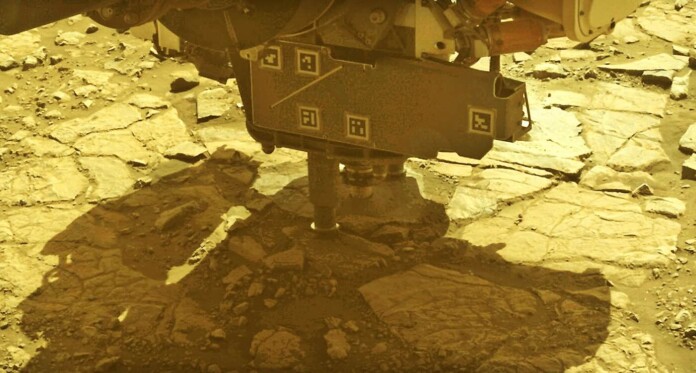
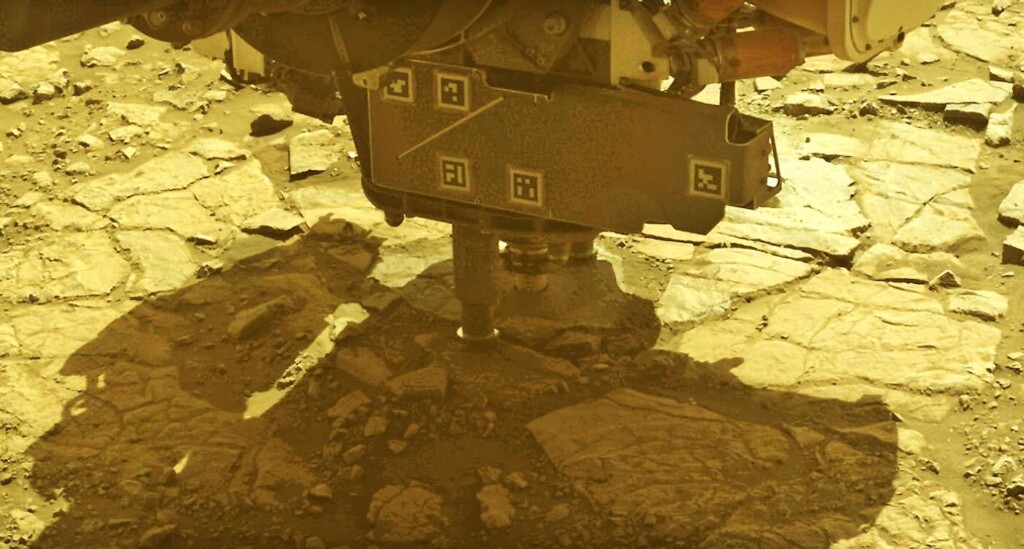
The state-of-the-art Perseverance Mars rover has been sampling and studying the Martian geology at the fastest rate since the mission began after NASA scientists found a special area containing “all they hoped for.”
Since its landing in the summer of 2021, Perseverance has been exploring the bottom of a large depression called Jezero Crater, at the bottom of which there was once a lake billions of years ago.
Having gathered samples of rocks and minerals along the crater floor, the delta of a river that fed the lake, and in various places on the crater slopes, the robotic geologist has been exploring the crater rim, where the diversity of the rocks has increased considerably.
It has conducted almost 100 sampling efforts since summiting, and there is still more to be done.
Looking back over a “whirlwind last four months” the team at NASA’s Jet Propulsion Laboratory (JPL) that drive and direct the rover are buzzing with excitement.
“During previous science campaigns in Jezero, it could take several months to find a rock that was significantly different from the last rock we sampled and scientifically unique enough for sampling,” Katie Morgan, who is the Perseverance’s project scientist at NASA’s JPL in Southern California, said in a statement. “But up here on the crater rim, there are new and intriguing rocks everywhere the rover turns. It has been all we had hoped for and more.”
Most of the work has been done on a roughly 445-foot-tall (135-meter-tall) slope the science team calls “Witch Hazel Hill.” Located on the western rim of the crater, it contains tons of fragmented once-molten rocks that were knocked out of their subterranean homes billions of years ago by one or more meteor impacts, including possibly the one that produced Jezero Crater.

Perseverance is also finding these formerly underground boulders juxtaposed with well-preserved layered rocks, and other masses that seem to have been sculpted by running water; a veritable rock bonanza that may have also included the oldest sample yet.
The sample code-named “Shallow Bay,” came from a piece that chipped off a solid rock that most likely formed at least 3.9 billion years ago during Mars’ earliest geologic period, the Noachian, and it may have been broken up and recrystallized during an ancient meteor impact.
ALSO CHECK OUT: Scientists Puzzling Over Bright White Rock on Mars – the First of its Kind, Never Seen Before
Perseverance has collected samples of five rocks, performed detailed analysis on seven others, and zapped an additional 83 with its laser for remote study. The laser is part of a spectrograph, which will analyze the colors of the rocks thus zapped, and each color can be seen in the spectrograph as a different element.
“The last four months have been a whirlwind for the science team, and we still feel that Witch Hazel Hill has more to tell us,” said Morgan. “We’ll use all the rover data gathered recently to decide if and where to collect the next sample from the crater rim. Crater rims — you gotta love ’em.”
MORE PERSEVERANCE UPDATES: NASA Summarizes What New Mars Rover has Found as it Finishes it’s Mission at Just Over 1,000 Days
The only downside is that, at the moment, there is no concrete plan for how to get Perseverance’s samples back from Mars. The sample return mission seen as feasible when the rover launched has recently seen its costs rise to $11 billion, prompting NASA to begin a complete overhaul of the plan and solicite new proposals from industry and academia to find a more affordable and faster way to return the samples to Earth.
SHARE This Worthwhile Update On The Perseverance Mars Mission With Your Friends…
Teens Win 2025 Earth Prize for Refrigerator That Runs on Salt – 200 are Headed to Hospitals to Preserve Medicine


From India comes the story of three teen inventors who were looking to improve rural healthcare by creating a portable fridge that needed no electricity or coolant fluids.
The result of their inspiration is a small, salt-cooled fridge that needs neither a power outlet nor a battery, but rather cools down passively as the salts dissolve in water.

Calling it “a fridge to bridge the world,” the Thermavault can use different combinations of salts to keep the contents at temperatures just above freezing or below it. Some vaccines require regular kitchen fridge temps, while others, or even transplant organs, need to be kept below freezing, meaning this versatility is a big advantage for the product’s overall market demand.
Dhruv Chaudhary, Mithran Ladhania, and Mridul Jain are all children of physicians or medical field workers in the state of Indore. Seeing how difficult it was to keep COVID-19 vaccines viable en route to countryside villages hours outside city centers in tropical heat, they wanted to create a better, portable solution to keeping medical supplies cool.
Because salt molecules dissolve in water, the charged ions that make up the salt molecules break apart. However, this separation requires energy, which is taken in the form of heat from the water, cooling it down.
Though the teen team knew this, it remained a challenge to find which kind of salt would have the optimal set of characteristics. Though sodium chloride—our refined table salt—is what we think of when we hear the word “salt,” there are well over one-hundred different chemical compounds that classify as salt.
“While we did scour through the entire internet to find the best salt possible, we kind of just ended up back to our ninth-grade science textbook,” Chaudhary told Business Insider.
Indeed, the professors at the lab in the Indian Institutes of Technology where they were testing Thermavault’s prototype were experimenting with two different salts which ended up being the best available options, a discovery made after the three teens tested another 20, none of which proved viable.
SIMILAR YOUNG MINDS: Teens Developed App That Identifies Mouth Cancer–Making Early Diagnosis Easy and Winning $50k for Their School
These were barium hydroxide octahydrate and ammonium chloride. The ammonium chloride alone, when dissolved, cooled the water to between 2 and 6 degrees Celsius (about 35 to 43 degrees Fahrenheit) perfect for many vaccines, while a dash of barium hydroxide octahydrate dropped that temperature to below freezing.
“We have been able to keep the vaccines inside the Thermavault for almost 10 to 12 hours,” Dr. Pritesh Vyas, an orthopedic surgeon who tested the device at V One hospital in Indore, said in a video on the Thermavault website.
MORE BRILLIANT MEDICAL INVENTIONS: World’s Smallest Pacemaker is Made for Newborns, Activated by Light, and Requires No Surgery
Designing a prototype, the teens have already tested it in local hospitals, and are in the process of assembling another 200 for the purpose of testing them in 120 hospitals around Indore to produce the best possible scope of use and utility data for a product launch.
Their ingenuity and imagination won them the 2025 Earth Prize, which came with a $12,500 reward needed for this mass testing phase.
SHARE This Brilliant Invention And The Even More Brilliant Minds Behind It…
“Preserve and cherish the pale blue dot, the only home we’ve ever known.” – Carl Sagan (Do it today on Earth Day)
Quote of the Day: “Preserve and cherish the pale blue dot, the only home we’ve ever known.” – Carl Sagan (Do it today on Earth Day)
Photo by: Elena Mozhvilo, cropped
With a new inspirational quote every day, atop the perfect photo—collected and archived on our Quote of the Day page—why not bookmark GNN.org for a daily uplift?

Good News in History, April 22
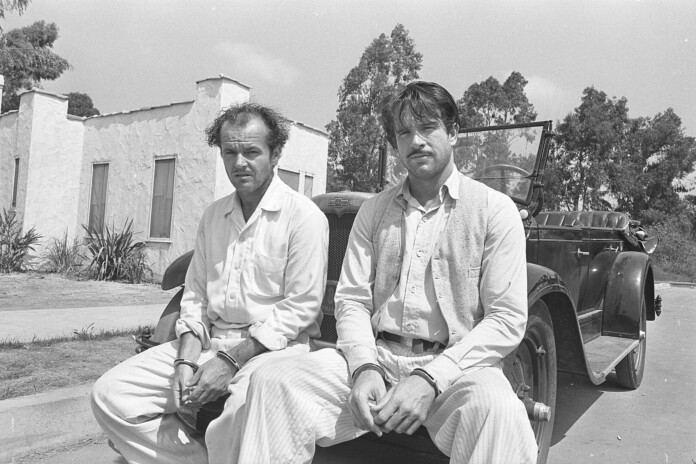
Happy Birthday to Jack Nicholson who turns 88 years old today. Born in New Jersey, the actor has excelled in genres from satirical comedy to romance to dark portrayals of antiheroes and psychopaths. Working in Hollywood for more than 60 years, he has played the “eternal outsider, the sardonic drifter,” the rebels against social structure – and his 12 Academy Award nominations make him the most nominated male actor in the Academy’s history. Only he and Michael Kaine have been Oscar-nominated in every decade since the 60s. READ the acclaim he has received over his long career… (1937)
World-First South Korean Natural Gas Project Paves a Route to More Power and Cheaper Carbon Capture


After 300 hours of continuous operations, a 3 megawatt demonstration power plant in South Korea has offered a glimpse into the future of natural gas burning.
Utilizing technology that offers the potential for natural gas plants to capture an additional 150,000 metric tons of CO2 every year, the demonstration has achieved never-before-seen results in controlling what comes out of the smokestack.
Hundreds of years ago, industrialized nations switched from burning wood or dung for power to coal. Coal was followed by oil, and oil by natural gas—all three of which are known as fossil fuels. Today, just below a quarter of all power generation is attributed to natural gas.
In terms of emissions, natural gas is by some distance the superior of the three, but it still releases billions of tons of CO2 into the atmosphere every year. Compared to coal and oil, the nature of natural gas combustion allows for better opportunities to “capture” CO2 released from the process.
However, along with being expensive, analysis has shown that often the captured carbon is used to squeeze more fossil fuels out of declining wells.
Now however, the Korea Institute of Energy Research (KIER) has successfully demonstrated the world’s largest gas power generation technology capable of inherently separating carbon dioxide from nitrogen, a method called chemical looping combustion (CLC).
In conventional gas power generation, fuel combustion releases CO2 alongside nitrogen and water vapor. Once emitted, CO2 mixes with nitrogen in the air, necessitating specialized facilities to selectively separate and capture pure CO2 for storage. This additional process increases power generation costs.
To tackle this challenge, CLC technology is emerging as an eco-friendly power generation solution. CLC technology delivers pure oxygen to the fuel using specialized oxygen-carrying particles. These particles release oxygen during combustion and later reabsorb it when exposed to air, continuously repeating the cycle to sustain the process continually and eliminating any reaction with nitrogen that would have to be undone later.
As a result, the combustion process generates carbon dioxide and water vapor, enabling direct capture of CO2 without the need for additional separation, an innovation that would shave 30% off the cost of running a gas power plant that captures the CO2 it generates.
Additionally, unlike conventional combustion, which produces nitrogen oxides, a major contributor to ultrafine particulate matter and the health impacts it brings in urban environments, this technology operates through flameless combustion, drastically reducing NOX emissions.
In 2023, KIER and its partners established a 3 MW-scale pilot plant, the largest of its kind globally, and conducted full-scale demonstration tests. Over 300 hours of continuous operation, the technology achieved a carbon dioxide separation and emissions efficiency exceeding 96%, surpassing the previous global benchmark.
Another benefit of CLC technology is that when done right, it generates steam from the water vapor that can directly contribute to power generation. Though tested in Europe, the United States, and China, no CLC demonstration has ever achieved steam production.
KIER, however, did.
If the demonstration scale of the CLC technology is small, efficiency is high, but heat loss is significant, making it impossible to generate steam. Similarly, if efficiency cannot be maintained while scaling up, steam production does not occur.
KOREAN EXCELLENCE: The World’s Highest Spokeless Ferris Wheel Set for Construction
KIER successfully scaled every aspect of the demonstration plant to a point at which steam production was achieved, a world first.
According to a statement from KIER, economic analysis of CLC technology predicts that, compared to a conventional 100MW natural gas power plant, it will generate an additional annual operating profit of $10.1 million and generate 4% more power.
STORIES FROM THE ENERGY MARKET: Ferries, Planes Line up to Purchase ‘Solar Diesel’ a Cutting-Edge Low-Carbon Fuel from Swiss Start-up
CO2 capture costs would be reduced by 30% compared to existing methods, enabling the capture of over 150,000 tons of CO2 per year. This advancement is expected to make a significant contribution to achieving national carbon neutrality goals.
“To achieve national carbon neutrality, it is essential to establish and operate gas power plants that incorporate innovative technologies such as chemical looping combustion (CLC),” said Dr. Ryu Ho-jung, the lead researcher of the CCS Research Department.
MORE STORIES LIKE THIS: Old Coal-Fired Power Plant Found the Key to Solving America’s Biggest Clean Energy Challenge
“We will continue to advance and demonstrate our technology to accelerate the commercialization of next-generation power generation solutions.”
Though many climate activists will feel that money and minds should be bent on removing natural gas from use rather than improving its efficiency, many nations will simply not do this. Invented in the late 20th century, coal scrubbers significantly reduced the health effects of coal burning in built-up areas, and today, it’s only just being phased out of use in the West. If widely implemented, CLC technology could be reducing the impact of human power generation on the atmosphere for 40 or 50 years in advance of their hypothetically ultimate retirement.
SHARE This Groundbreaking Improvement In Natural Gas Use With Your Friends…
Tonight Is a Peak Lyrid Meteor Shower – And You Don’t Have to Wake Up Early to See it

Tonight (April 21st-22nd) is the Lyrid meteor shower that produces anywhere between 10 and 100 shooting stars per hour.
They’re also one of the best for Americans since the point in the sky they seem to originate from is located far in the north of the night sky in the constellation Lyra. Those in the Southern Hemisphere won’t have as much northern sky in their view, but citizens of the US and Europe will have excellent viewing of this meteor stream.
Though the Earth passed into the Lyrid meteor stream on the 16th of April, tonight is what’s called the peak, when the largest number of shooting stars can be seen.
Meteor showers occur when the Earth crosses the path of a comet, and the shooting stars are fragments of the comet burning up in the atmosphere. The comet that forms the Lyrids is known as Thatcher Comet, after the astronomer who discovered it.
It’s called the Lyrid meteor stream rather than the Thatcher meteor stream because the shooting stars appear to Earthlings as if they originate in the constellation Lyra. To find Lyra, look for the star Vega, one of the brightest in the sky this time of year.
Though Earth passes through these meteor streams around the same time every year, the Moon’s phases are less consistent. As it happens this year, a waning crescent will fall below the horizon at 01:35 UTC, or after dinnertime hours on US East Coast, meaning there will be no light pollution from the pale lady.
The longer you watch the meteors, the higher Lyra and its guide star Vega will rise in the sky, Earthsky reports. Long after midnight but before dawn in the Northern Hemisphere, they will be so high that any shooting stars will appear to streak across the whole of the sky, promising a much better show.
SHARE This Great Late Night Activity With Your Friends…
Bobcats Gain Migratory Corridors in New Jersey – A Patchwork of Sanctuary Thanks to Nonprofit
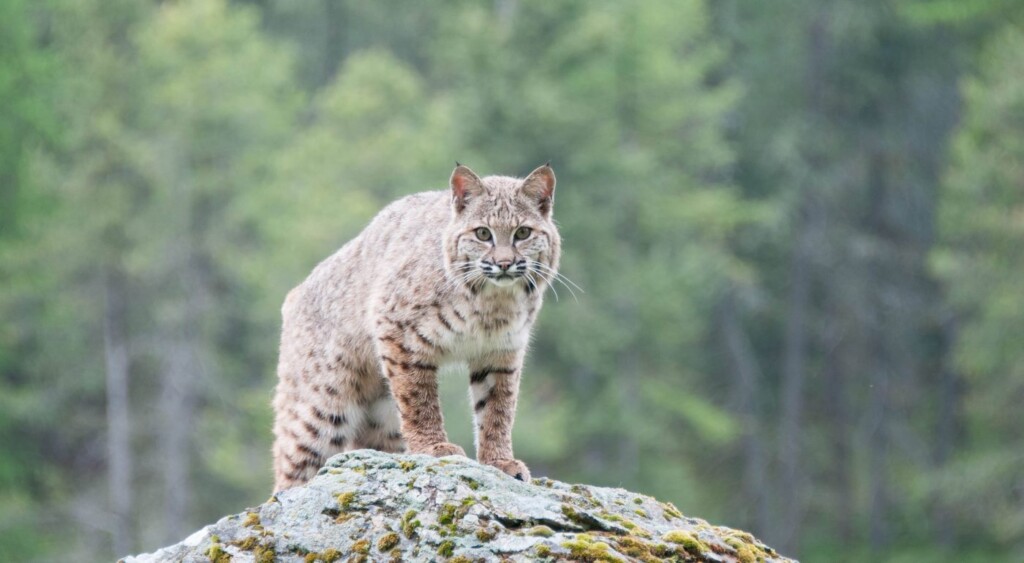
A famous American conservation nonprofit is celebrating the acquisition of a very small piece of land with a very big role to play in protecting wildlife in New Jersey.
Though 454 acres is hardly anything in the grand scope of American conservation, The Nature Conservancy’s recent acquisition is located along a stretch of rural country known to them as “Bobcat Alley.”
Here, critical migratory corridors allow for the movement of animals north and south through a choke point in one of the most built-up regions of the Appalachian Mountains. Warren and Sussex counties in New Jersey are located along the state’s northern tip where it meets Pennsylvania and New York, and it was ten years ago that The Nature Conservancy (TNC) realized that this valuable section of East Coast woodland and mountains needed protection.
The Bobcat Alley Initiative started in 2014 with the aim of preserving 32,000 acres of land to ensure state-Endangered bobcats had a corridor through which to migrate in and out of state. New Jersey is one of the most developed states in the country, and fragmentation of habitat with roads and developments was increasing.
The original goal was for TNC to acquire 60%, or 19,200 of the 32,000 acres and lobby or partner for the protection of the other 40%. Bobcat Alley runs through Warren and Sussex counties, along the aptly-named Kittatinny Hills to the northwest, and the state’s Southern Highlands to the east.
About 13,000 of the 19,200 acres are already protected, while local partners in the Bobcat Alley Initiative protect another 1,529 acres.

TNC have recently tripled the size of the goal to 96,000 acres, to which it recently added 189 acres of field and forest in the Mount Pleasant section of Knowlton Township in Warren County, and 248 acres of rolling hills and forest in Hampton Township in Sussex County, the latter of which being the focus of TNC conservation attempts for two decades.

“We are building Bobcat Alley piece by piece in a state where the land parcel sizes are modest, but cost is at a premium,” said Barbara Brummer, TNC’s New Jersey State Director, in a statement announcing the new acquisition.
SIMILAR WORK AROUND THE COUNTRY: Elk Can Migrate Through Private Colorado Ranch After First-of-its-Kind Deal with Conservation Group
“The project takes patience, commitment and teamwork, and we truly appreciate the partners that stepped up to help us protect these beautiful and critical natural areas for wildlife and people.”
The objective of the tripling in size is to connect the New Jersey section of Bobcat Alley to existing protected areas in New York’s Hudson River Valley and Pennsylvania’s Appalachian areas.
The Kittatinny Ridge contains large, mature, and undisturbed forests along this mountainous span in northwestern New Jersey and is prime habitat for roaming species like bobcats, black bears, and red foxes.
MORE EAST COAST WILDLANDS: New Yorkers Will Love This New 7.5 Mile Trail Along the Hudson River Highlands Inspired by Landscape Painters
The Southern Highlands contain important intact stands of oak, beech, maple, and hickory where gray foxes, barred owl and river otter thrive. The forests protect drinking water for most residents of northern New Jersey, and the Pequest and Musconetcong Rivers, which are stronghold habitats for brook trout, New Jersey’s state fish and only native trout.
The Southern Highlands are at much greater risk of development than Kittatinny. All of New Jersey’s land is predicted to be either developed or protected come the end of the century.
SHARE This Ambitious Project And TNC’s Plodding Success Year Over Year…
The Lasting Power of Affectionate Mothering: Nurturing Now, Thriving Later

Affectionate mothering in childhood may have a lasting impact on important personality traits, potentially influencing life outcomes such as educational achievement, economic success, and health and well-being.
Found in the results of a new twin study, the data suggests that positive maternal parenting could foster important traits such as openness, conscientiousness and agreeableness.
“Personality traits are strong predictors of important life outcomes, from academic and career success to health and well-being,” said Jasmin Wertz, PhD, lead author of the study and a professor of psychology at the University of Edinburgh.
“Our findings suggest that fostering positive parenting environments in early childhood could have a small but significant and lasting impact on the development of these crucial personality traits.”
The study examined changes in the Big Five personality traits, which are viewed by personality psychologists as the five basic dimensions of human personality: extraversion, agreeableness, openness, conscientiousness, and neuroticism, or emotional stability.
Wertz and her colleagues examined how maternal affection during childhood—specifically between the ages of 5 and 10—predicted the Big Five personality traits at age 18. Their research was published by the American Psychological Association.
Researchers examined data from 2,232 British identical twins (51.1% female) who were followed from birth through age 18 as part of the Environmental Risk Longitudinal Twins Study.
Studying identical twins allows researchers to control for genetic and environmental factors by comparing identical twins who grew up in the same family. During the study, researchers conducted home visits with the twins’ mothers and recorded them talking about each of their children. Trained observers then rated the mothers’ responses for warmth and affection.
Twins whose mothers expressed more warmth toward them in childhood were rated as more open, conscientious and agreeable as young adults.
The results offer evidence that positive, affectionate mothering can affect key personality traits that are linked to success later in life, and these influences could have an impact across generations, said Wertz. The researchers note that even modest changes in personality could lead to significant population-wide benefits over time, particularly in promoting conscientiousness, which is strongly associated with success in education, work, and health, as well as the presence of discipline and orderliness.
Researchers found no lasting associations between maternal affection and extraversion or neuroticism. These findings suggest that other environmental or genetic factors—such as peer relationships, life experiences, and perhaps later interventions—may be more influential for these in adulthood.
The findings also underscore the importance of considering both genetic and environmental factors when designing programs aimed at promoting positive personality traits, according to Wertz.
ALSO CHECK OUT: 6 Expert Parenting Tips for Getting Closer to Your Kids–Try Changing Up These Routines
“This research provides valuable evidence for the potential of parenting programs to influence critical aspects of personality development,” she said. “However, it also highlights the need for a nuanced understanding of how different factors, including genetics, parenting and life experiences, interact to shape who we are.”
Wertz believes the research provides important practical considerations for policymakers and practitioners working in education, family welfare and mental health. Given that conscientiousness may predict success in school and the workplace, interventions designed to enhance affectionate parenting could contribute to improving educational outcomes, mental health and social well-being on a broader scale.
MORE PARENTING RESEARCH: Dutch Bringing Back Risky Play–in Parks Where Kids Climb, Sword-fight with Sticks and Build with Hammers
“There are many proven ways to support parents, such as policies that improve a family’s financial situation; access to treatment for parents who struggle with mental health problems such as depression; and parenting programs that help parents build stronger relationships with their children,” she said.
The research also sheds light on the possibility of developing parental training models to address inequalities in personality development. “By targeting parenting practices that promote positive traits in childhood, it may be possible to reduce disparities in life outcomes associated with socioeconomic background, family dynamics and other environmental factors,” Wertz said.
SHARE This Important Research With The New Mothers In Your Life…
“They always say time changes things, but you actually have to change them yourself.” – Andy Warhol
Quote of the Day: “They always say time changes things, but you actually have to change them yourself.” – Andy Warhol
Photo by: Martin Martz
With a new inspirational quote every day, atop the perfect photo—collected and archived on our Quote of the Day page—why not bookmark GNN.org for a daily uplift?

Good News in History, April 21
Today is the Monday of Angels, also known as Pasquetta, or “Little Easter,” a celebration on the Italian calendar marked with a day off school. It commemorates the time that angels descended to the sepulcher of Jesus to explain his resurrection to the grieving women. Many countries that follow Western Christianity, including most of Christian Europe and Africa, have Little Easter as a holiday, though the US does not. READ what the Italians do…







